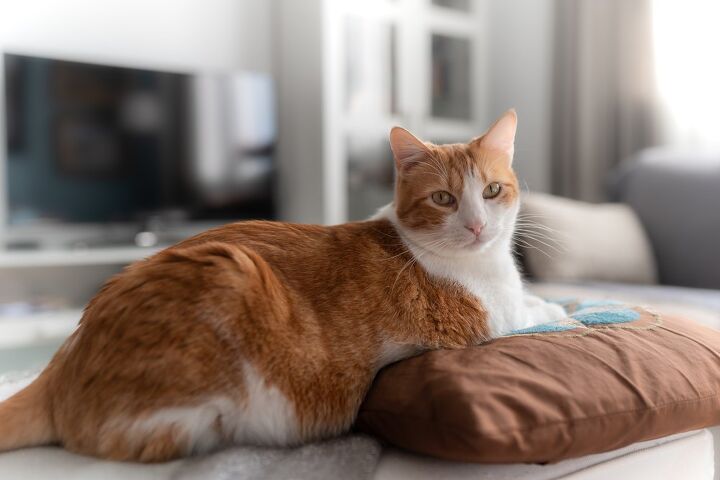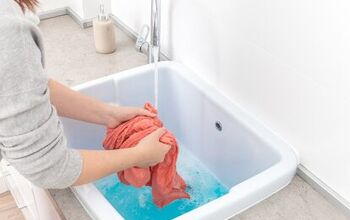How To Get Rid Of Cat Hair Everywhere

Cats will shed all year round, regardless of whether they have long or short hair. Fur might seem to cover everything because spring and fall are when cats shed the most. Hair is continually being cycled through a cat, so it ends up everywhere. We truly do mean everywhere.
Keeping cat hair at bay can be overwhelming, but by using a pet hair sponge, dusting mop, or a pet hair vacuum, you can keep it from overtaking your whole home. Also, brush your cat on a daily basis, and change their diet to include more omega-3s. This will help it to shed less.
Maintaining cleanliness can appear to be a full-time job. So, in order to keep cat hair under control without having to clean constantly, we’ve put up a few suggestions.
Try a Pet Hair Sponge
Cat hair removal can be completed quickly with pet hair sponges. These are comparable to a regular sponge but are softer and less damaging to your surfaces. When pets are stroked across furniture, pet hair sponges operate to collect the hair.
Be sure you move in a single sweep across your chair or couch. Brushing against the grain will cause all the hair to fall back onto the couch. Use your hands to wipe the hair from the sponge when it is covered in it rather than using water to do it.
Use a Mop for Dusting
After working with the soft surfaces in your home, it’s time to clean the hard surfaces. You can clean up the furry debris that your pets leave behind with a damp duster. Such dusters help collect hair more quickly and effectively than a standard mop with a moderately damp sponge.
Hair won’t be pushed around by a damp duster, which will instead trap it inside the cleaning cloth along with debris and dust. Even skirting boards, floor trimmings, window ledges, and other surfaces can be cleaned with these mops.
Rubber Gloves
Rubber gloves are a good option if you want to use something that you presumably already have at home to remove cat fur. A static electric charge is created when a dry rubber glove is brushed against a piece of cloth. This causes all the cat hair to quickly stick to your rubber gloves as a result. It also functions when a couple of drops of water are added to the glove.
Rinse off the glove once it has been covered in hair. Try soaking the gloves in warm water if the hair truly won’t go away.
Rubber gloves are a simple and affordable solution to prevent cat hair from getting on your furniture.
Brush Your Feline Friend
If your cat dislikes being groomed, this procedure may be difficult. However, brushing can significantly reduce the amount of cat fur in your house. Less hair will drift and collect on your furnishings if you brush your cat frequently.
If your cat likes it, it’s a terrific way to increase the amount of time you spend together. You can prevent excessive cleaning by combing away the extra hair, especially during the shedding season. The majority of cats enjoy being petted, so they might not even notice that you’re using a brush instead of your hand.
Start off carefully with anything new, though, and watch your cat’s reaction. Brush aside if they think it’s just pet time! Allow them to smell the comb or tool first if they appear frightened or unsure of it.
To help them become accustomed to the brush, you can put it out where they can see it. Combs and brushes come in a wide variety of styles. You can brush your cat while wearing a glove , so that it feels normal to them.
There are also brushes designed specifically to remove the old hair from a cat’s undercoat and keep the coat healthy.
Try a Pet Hair Vacuum
The amount of cat hair in your home can be significantly reduced by using a vacuum for pet hair. Purchasing a model designed specifically for pet hair and dander is always a good idea.
More hair will be removed than with a conventional vacuum, thanks to the stronger suction force of this. Using a vacuum with a motorized tool will allow you to cover more ground in a shorter amount of time.
These can make it easier for you to access those difficult-to-reach locations. They also include bristles that may more easily latch onto hair and dig out any bothersome hair that has become clumped deep inside.
When dealing with cat fur, traditional vacuums that rely on airflow to turn the bar will perform less well. However, a motorized brush bar will continue to work regardless of what is thrown its way, providing you a deeper clean.
How Do You Keep Cat Hair From Getting Everywhere?
The easiest way to take care of pet hair in your home is to prevent it from getting everywhere in the first place. Below are a few tips you can use!
Rethink Their Diet
You might be surprised to learn that your cat’s food can have a big impact on how much fur they shed. A lot of cat owners are ignorant of the connection between food and their cats’ shedding.
Making small changes to your cat’s nutrition can significantly reduce the quantity of hair they shed. Cats fed a diet rich in omega 3 fatty acids, low in carbohydrates, and high in protein tend to shed their fur less.
Start Using a Robot Vacuum
You require the appropriate tools to defeat cat fur if you truly want to succeed. It makes sense why you haven’t been able to clean anything up if you’ve been using simply a pan and brush.
Although a pan and brush are excellent for cleaning specific areas, they are ineffective against cat hair since it constantly gets everywhere and is incredibly mobile.
Restrict Your Cat’s Access
Cats love to explore, and climb on anything. It doesn’t matter if it’s your furniture, clothing, dirty laundry, or shelves; your cat will eventually climb around everything.
It’s best if for the most part, you’re able to have your cat in one room, especially while you’re at work or out of the home. Block off access to your bedroom, kitchen and other areas if possible. While this won’t keep the hair at bay entirely, it’ll keep it easier to manage.
Related Guides

Heather is a passionate writer who loves anything DIY. Growing up, she learned everything from home repairs to design, and wants to share her tips with you. When she's not writing, she's usually hiking or searching for her next DIY project.
More by Heather Robbins













![10 Best Scroll Saws for 2022 [Ultimate Reviews & Buyer's Guide]](https://cdn-fastly.upgradedhome.com/media/2023/07/31/9070684/10-best-scroll-saws-for-2022-ultimate-reviews-buyer-s-guide.jpg?size=350x220)
![Finishing Basement Without Permit [Is It Really Illegal?]](https://cdn-fastly.upgradedhome.com/media/2023/07/31/9070078/finishing-basement-without-permit-is-it-really-illegal.jpg?size=350x220)












